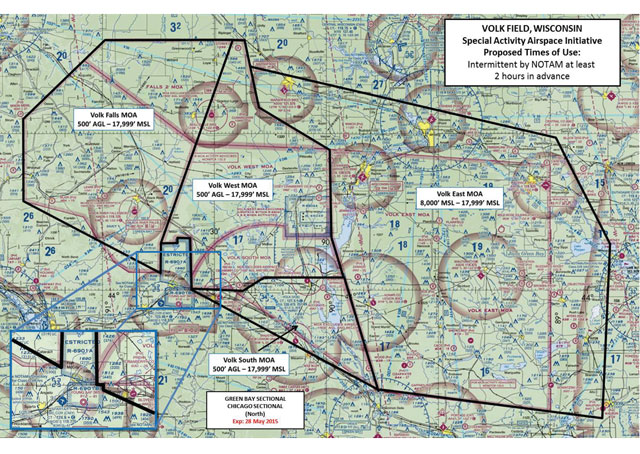
AOPA is seeking specific adjustments to a proposed special-use airspace expansion in Wisconsin that would facilitate military training but, as proposed, create significant limits on general aviation activity.
Comments submitted Feb. 10 by AOPA Director of Airspace and Air Traffic Rune Duke detail the concerns expressed by local pilots, and note avoidable impacts on five airports and a heavily traveled route in the area.
“AOPA is appreciative of the outreach, public meetings, and collaboration that the local military proponent has engaged in with the general aviation community over this proposal’s eight year history; however, the proposal misses several opportunities to mitigate the negative impacts to general aviation that would result,” Duke wrote, going on to detail specific mitigations that could ease the impact on GA operations.
AOPA continues to urge pilots to review the proposed changes and submit comments via email by Feb. 28; please also share those comments with AOPA.
AOPA reached out to Airport Support Network volunteers in Wisconsin, and also received several comments at headquarters following publication of a story in January describing some of the association’s concerns.
Duke and AOPA Great Lakes Regional Manager Bryan Budds discussed with the military proponent in January possible mitigations, as the association always attempts to collaborate on solutions that reduce the impact of large military training areas while allowing the military to conduct important training and remain well-prepared to defend the nation.
Following the discussion, Duke proposed specific changes that include segmentation of airspace activation, creation of a transition route, and adjustments to the altitudes designated for military use. Adjustments proposed by AOPA would allow Victor 345, a heavily traveled route, to remain available while military training is going on in certain areas.
“As military utilization of the lower altitudes is limited, AOPA believes it should be of little impact to operations, pilot’s mental resources, or to air traffic by subdividing the airspace by altitude,” Duke wrote.
AOPA also detailed the significant contribution GA makes to Wisconsin’s economy, as noted in a 2010 study by the state Department of Transportation, Bureau of Aeronautics, and specifically pointed out that EAA AirVenture alone contributes $110 million in economic activity, suggesting that special-use airspace activation during the event, as well as several days before and after, should be avoided.



